Text
Shōnen Anime Through The Feminist Lens
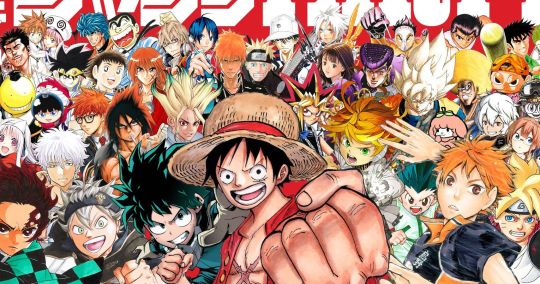
During quarantine, there has been a significant rise in the popularity of Anime; this wave of new fans brought back memories of when I first started exploring anime and how I came to love this media. Anime is a confusing word: In the western world, anime a separate genre of animated shows and movies from the typical western cartoons (ie. SpongeBob, Tom and Jerry, etc.) while in Japan, it refers to any animation in general. But for the sake of simplicity, I will refer to anime as a type of animated show or movie that uses signature aspects of Japanese-style animation.
Usually, a person is recommended mainstream shows from the shōnen genre when introduced to anime. Shōnen anime and manga are marketed towards boys between the ages of 12-18, but a lot of people outside of that demographic enjoy this genre as well. I find myself watching and recommending shōnen shows because of how exceptionally written the plot, the character development, and worldbuilding are. However, problems with female representation stem from the misconception that shōnen is only for boys or that girls don’t enjoy these types of stories. It is frustrating to see how little action and development female characters are given compared to their male counterparts and how often they are sexualized for the sake of comedic relief or fan service.

NARUTO and NARUTO SHIPPUDEN
The Naruto series follows the journey of Naruto Uzumaki as he achieves his dreams to be acknowledged by the village he lives in and become the Hokage (the leader of the village). It’s a story about saving the world, protecting your loved ones, and believing in yourself.
Almost every person who has watched more than 3 years of anime has seen Naruto; those who haven’t still can recognize characters, references, and general plot points. Yes, it is THAT popular. I knew about the show but, I put off this anime for so long because of the silly reason that Naruto was an annoying brat at the beginning of the series. It took me a few months to build up my courage to pick up the series again— and wow! I was glad I did! I restarted my journey about two months ago and, as of today, I have less than 50 episodes left to watch to finish the series (keep in mind that the complete series has about 700 episodes). I got attached to the characters for their development and their compelling stories. I saw Naruto grow from being a troublemaker to a dependable hero, watched Sasuke go down a dark path for the sake of revenge, and learned about Kakashi and Itachi’s heartbreaking childhoods. But the girls? Where are the girls?

As well written as the story is, girls in Naruto are viewed as support-type characters for the boys; their stories aren’t touched upon and remain the same throughout the series. The lack of development of the girls is best highlighted by Sakura— the main female character and the most hated person from the series, and dare I say, all of anime. At the beginning of the series, Naruto, Sasuke, and Sakura train together to become ninjas with their teacher, Kakashi. Sasuke was a prodigy and excelled in every task, Sakura was known for her intelligence and chakra control, and Naruto lacked skill yet impulsively charged headfirst towards his enemies. As the show went on, Naruto and Sasuke’s skills have grown on par as they continuously try to learn new powers to one-up the other. But Sakura stayed the same. Even though she gained super strength and trained to become a medical ninja under the Fifth Hokage, her abilities and progress are constantly shadowed by her teammates' flashy powers (look at the picture above). This gap is even more prominent after the time skip in Shippuden where she becomes a “damsel in distress” which annoyed a lot of fans. She had so much potential to become a great character. Even if she was not the strongest ninja, the show could have taken steps to make her valuable in some way even if all they did was make her an efficient support character to Naruto and Sasuke instead of making her seem like she is always in their way. The unbalance caused by the lack of active female roles in Naruto leaves the female audience unrepresented. The female characters' underdevelopment implied that the girls are incompetent and therefore don’t get to make an impact in the story.
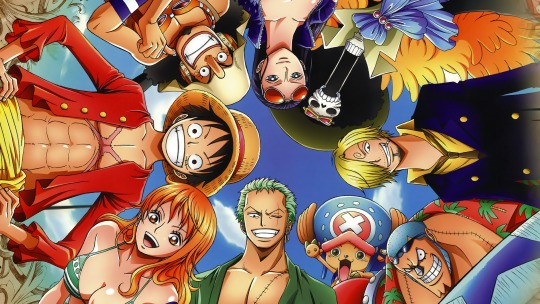
ONE PIECE
I can talk about this show for hours. With 950+ anime episodes and 1000+ manga chapters, One Piece is synonymous with art; it follows the story of Monkey D. Luffy and his crew, the Straw Hat Pirates, on an adventure to find One Piece. Unlike other shōnen stories, One Piece immerses the audience into a mysterious world that is complex, dynamic, and feels real. Every single character is well developed— each of them have insanely detailed backstories, memorable personalities, and compelling motivations making them feel human. The story also tackles unconventional topics such as slavery, racism, the justice system, and classism. I could go on and on listing reasons as to why I love One Piece or why it is worth catching up to the 950 episodes, but I feel like you should let One Piece in and find that out for yourself.
Unlike Naruto, women take on significant roles in One Piece and are often admired as role models. However, the lack of body diversity and the over-sexualization of the female characters leave a rather unpleasant aftertaste.
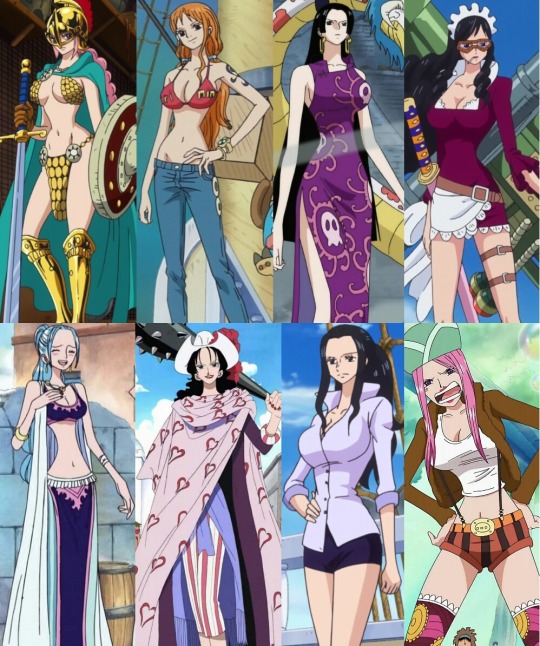
As seen above, they all suffer the same-body syndrome— large breasts, impossibly tiny waists, and skimpy clothing. I get that these are common types of fanservice but, there are plenty of questionable design choices whenever fanservice is prioritized over logic (ie. the top-left girl is supposed to be a gladiator but her outfit does the very opposite of protecting her as it leaves her vital areas exposed). Another issue I have is with Sanji and his behaviour around women. He is the prime example of what the internet would call a ‘simp’ where his perverse tendencies and chivalry clash whenever he is near a female character. I feel like his overprotectiveness toward women and his willingness to die for them is counterintuitive to the powerful portrayal of women in the story. I understand that fanservice isn't going anywhere but the girls’ unrealistic designs and their treatment dilute their complex characterization to mere pretty and delicate objects.
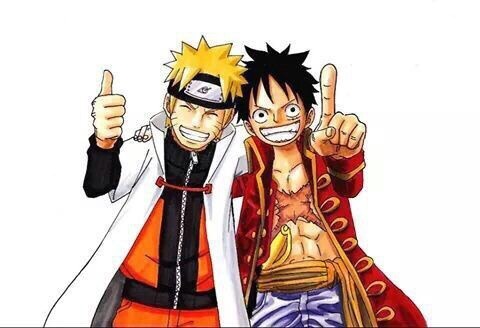
CONCLUSION
From a feminist point of view, Naruto and One Piece have their own shortcomings when it comes to the inclusion and depiction of girls. I particularly chose to talk about them because they are the central faces of the shōnen genre, both of them depict common issues with female representation in most shōnen stories. It is understandable to a certain extent as to why the authors chose to draw/develop their characters, however, the lack of active female characters in shōnen stories fuels the ” shōnen is for boys, therefore, don’t expect female representation” narrative. It would do no harm to write stronger and more complex female characters in these stories, in fact, it would make the stories much more interesting as there is variation in perspectives and experiences— especially now because of the strong societal push toward feminism and the growing female audience consuming anime media. The fact that shounen does target boys is perhaps the most important reason to feature complex, active female characters in these stories—not only as supportive figures or dream girls, but as someone they can relate to and look up to as well.
EXTRA: NEW GENERATION SHŌNEN!
Naruto and One Piece have been in the anime scene for decades, but as societal values shift, many New Generation Shōnen are trying to tackle the inclusion of feminism in their stories. Here are some:
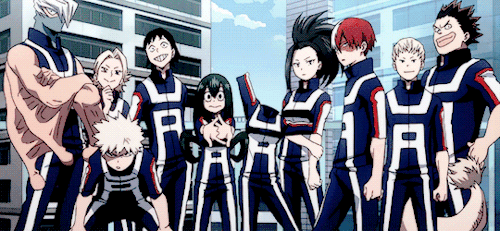
Boku no Hero Academia, one of the primary faces of New Gen Shōnen: A superheroes story where superpowers or quirks rule the world. Physical advantages male characters may have during fights is insignificant as the winner is decided by their ability to use their power at its full potential and their compatibility with the opponent’s quirk. Women are shown to have different body types, breaking the skinny hourglass stereotype with healthy and muscular bodies. Read more on how BNHA is breaking the moulds here: https://www.animefeminist.com/feature-hero-academia-confronts-shonen-sexism/

Mob Psycho 100: A supernatural shōnen where the main character, Mob, struggles with masculinity, battles for self-improvement, and desires to just be an amiable and helpful person. His story breaks the typical toxic masculinity tropes in shonen stories and instead focuses on Mob’s emotional journey to being comfortable with who he is. Read more about this here: https://www.animefeminist.com/anime-feminists-top-25-anime-of-the-decade/

Demon Slayer, another progressive main face of the New Gen Shōnen: A historical supernatural story where women are given major roles and are never looked down upon by their male counterparts. As demon slayers, their attire is unique to each individual yet fit for their job and is not compromised for the sake of fanservice.
- Leanne.
#anime#shonen anime#shonen#feminism#feminist lens#anime analysis#analysis#naruto#naruto shippuden#sakura#one piece#bnha#my hero academia#boku no academia#mob psycho 100#mob psycho#demon slayer#kimetsu no yaiba
23 notes
·
View notes